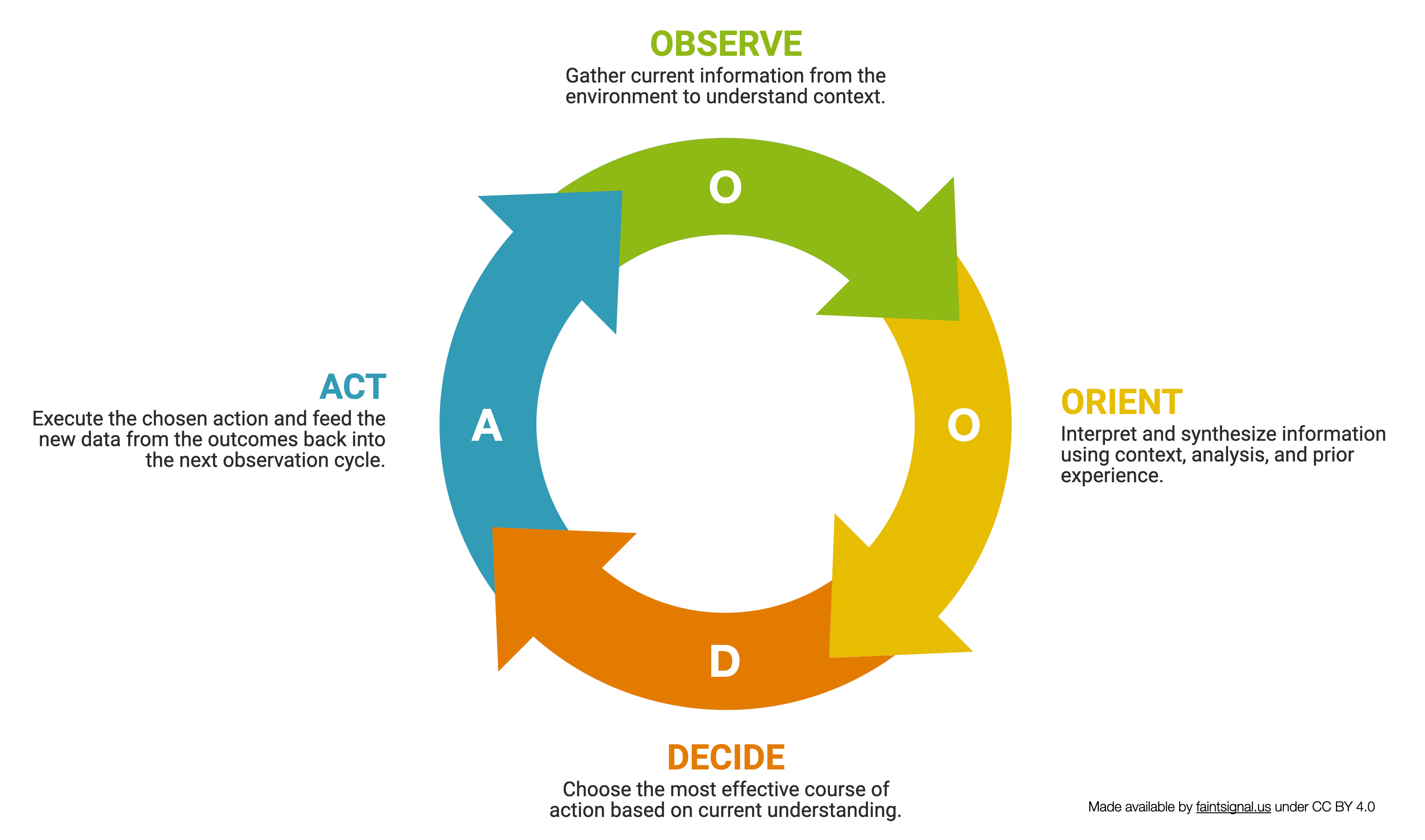OODA Loop
Ambiguity is … not something to be feared but something that is a given … We never have complete and perfect information. The best way to succeed is to revel in ambiguity.” —Grant Hammond, The Mind of War: John Boyd and American Security
He who can handle the quickest rate of change survives. —Lt. Colonel John Boyd
The default human tendency when encountering situations characterized by volatility, uncertainty, complexity, and/or ambiguity is to avoid or eliminate. This is often driven by a desire to optimize for stability, but results in increased risk. A more effective response is to engage the situation directly using a proactive and intentional process of learning and adapting, as needed, to it. One of the most effective of such frameworks is the OODA Loop.
- Observe – Gather current information from the environment to understand context.
- Orient – Interpret and synthesize information using context, analysis, and prior experience.
- Decide – Choose the most effective course of action based on current understanding.
- Act – Execute the chosen action and feed the new data from the outcomes back into the next observation cycle.

The OODA loop was first described by Lt. Colonel John Boyd (USAF) as a framework for training fighter pilots to respond rapidly to changes in their context. When circumstances change, Boyd taught, we need to shift our “mental concepts” (or mental models) in order to navigate in and respond to the new reality.[1]
#complexity #systems #mental-models
See also:
- Complex systems are characterized by VUCA
- Resilience Thinking embraces the reality that things change
- Mental models influence how we think and act
- Every logical model of reality must be continuously refined
For an excellent summary, see McKay, Brett & Kate. “OODA Loop: A Comprehensive Guide.” The Art of Manliness, 2 May 2019, https://www.artofmanliness.com/articles/ooda-loop/. ↩︎